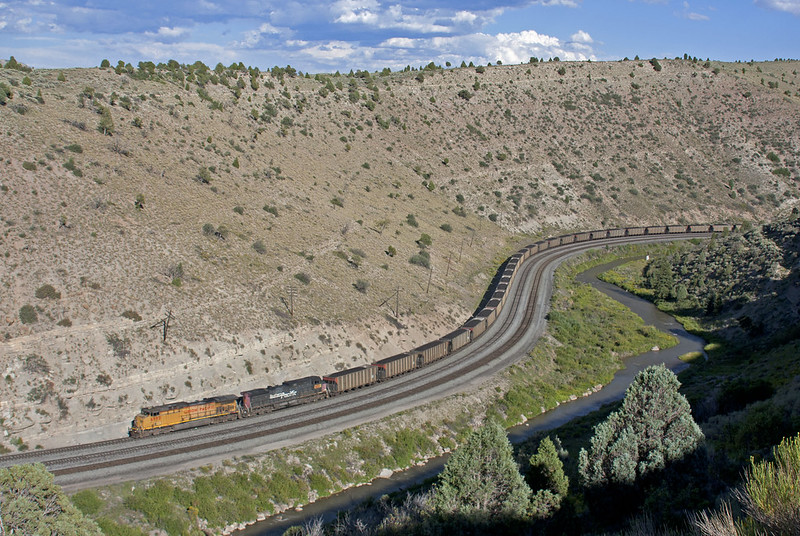By Justin Franz
More than a week after a Washington D.C. federal judge rejected the U.S. Surface Transportation Board’s approval of the proposed Uinta Basin Railway — an 85-mile railroad that would stretch into the oil-rich desert of eastern Utah — it’s unclear how its backers will proceed.
The STB approved the project back in 2021. If built, the Uinta Basin Railway would connect Utah’s oil-rich Uinta Basin with the national rail network at Kyune, Utah, on Union Pacific’s Provo Subdivision (the former Denver & Rio Grande Western over Soldier Summit). The effort is being spearheaded by Utah’s Seven County Infrastructure Coalition and Drexel Hamilton Infrastructure Partners. It would have been the first major railroad construction project in the U.S. in more than a generation (the last being the Chicago & North Western’s push into Wyoming’s Powder River Basin back in the 1980s).
But the project has been targeted by environmental and community groups worried about the crude oil that would move over the line and then east on the former Rio Grande, through environmentally sensitive places like Glenwood Canyon and the heavily populated Denver area. The Center for Biological Diversity was the lead group in the lawsuit. The non-profit alleged that the STB’s environmental impact statement had been incomplete and did not consider so-called downstream impacts (like the increase in oil train traffic in Colorado). On August 18, the Court of Appeals ruled in the plaintiffs’ favor.
After the ruling, the project’s backers wrote that they “remain committed to the successful planning, construction, and operation of the railway. While we disagree with the D.C. Circuit Court’s recent decision, we respect the authority of the U.S. Court of Appeals. We firmly believe that the railway’s Environmental Impact Statement (EIS) contains an appropriate and thorough analysis of the highlighted concerns, as it stands today.”
However, going back and redoing the EIS could take months or even years. Another option would be to appeal the decision, including the U.S. Supreme Court (the Colorado Sun reports that the backers would have three months to make such a decision). As this story was published, the Uinta Basin Railway had not indicated what it would do.



